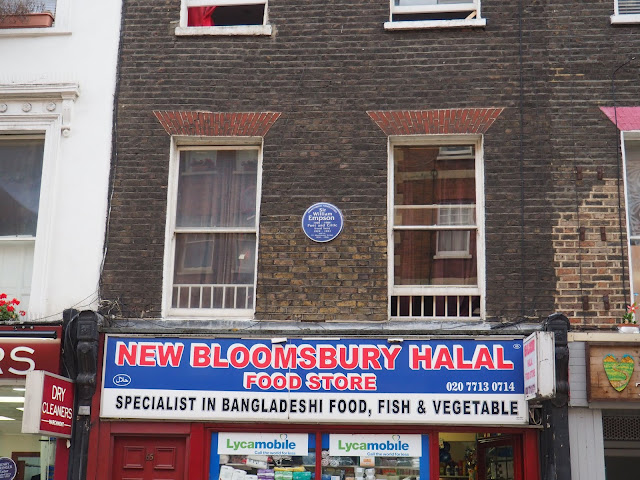“I am living at the Villa Borghese. There is not a crumb of dirt anywhere, nor a chair misplaced. We are all alone here and we are dead.”
That’s Henry Miller, the opening lines of Tropic of Cancer, an author and a book I used to spend a lot of time thinking about. I don’t anymore but those lines have evidently stayed with me. This is a picture of Miller walking (more or less), I think in Brooklyn.
For my own part, I am living, or at least staying for a couple of weeks, in an Airbnb, in Endsleigh Court, in Bloomsbury.
The place is indeed very clean, and I can place the chairs wherever I want. I am certainly alone, but the feelings of wanting to be dead are becoming rarer. My therapist has views on this.
Some would say that everybody needs therapy.
One great thing about Endsleigh Court, since I’m on the 7thfloor, is that you can look out of the window, down into the street, and at certain times of day the walkers in Upper Woburn Place, are very beautifully lit (or backlit).
You know, in general I find that whole Bloomsbury Group franchise thing pretty insufferable. And I’m sure the feeling would have been mutual. If there were some shift in the space/time continuum and Virginia Woolf actually met me, I’m sure she’d have thought I was the kind of oik who should be taken down a dark Bloomsbury alley and given a good kicking. Hard to imagine which member of the Bloomsbury Group could have done that: maybe Vanessa Bell.
Still, you can’t object to a geographical area simply on the basis of who used to live there. Bloomsbury is a very decent area to walk around. It may lack the grit and grime of the most interesting areas of London but it’s full of curiosities, and you can’t have grit and grime all the time.
There are blue plaques everywhere, Dickens, Darwin, Dorothy L. Sayers, as well the whole Bloomsbury Bunch. But this one’s very special:
Empson was the author of Seven Types of Ambiguity, and given that he taught in Tokyo and Peking, he might have been enough of an orientalist to appreciate the Bangladesh connection.
Empson was also, by adoption, another Sheffield lad, teaching at the university for the best part of 20 years – 1954 to 1972. He had a bunker-slash-man cave in the basement of 17 Wharncliffe Road.
Sheffield has always been an essentially tolerant city but the idea that a man could walk its streets with a beard like Empson's and not have the dogs set on him, suggests that the city used to be even more tolerant than I imagined.
Anyway, back in Bloomsbury, my Airbnb is close to one of my favorite London buildings, the Mary Ward House:
And I am suddenly reminded, though I never exactly forgot, of an odd and brief period in my life when I was dating a woman who was a doctor. She was very accomplished, and obviously smart, saving lives wherever she went, from Nottingham to Lesotho and back again. So she came down to London and we walked around and we were having a good enough time as far as I could tell, and we walked past the Mary Ward Centre and I said it was one of my favorite London buildings and she looked at me as though I was an idiot, and said something along the lines of “How can anybody have a favorite building?”
She found it both absurd and incomprehensible that a person might walk around the built environment and have feelings about what he saw. I didn’t even try to explain. On that same day we walked down to the ICA where there was an exhibition that included Meret Oppenheim’s Object which I said I found really great.
My date, the doctor, did not. You can imagine how well this relationship went.
 |
| Meret in playful mood. |
A last thought about William Empson, from Kenneth Lo, the chef, who was (apparently) Empson’s lodger when they both lived in Hampstead. Lo said that “William was one step removed from contemporary reality and seemed to stroll through life unhindered by its troublesome details.” Lucky old William, you might say.





































